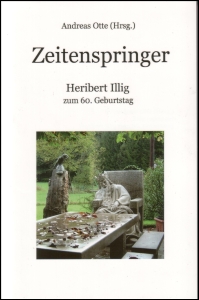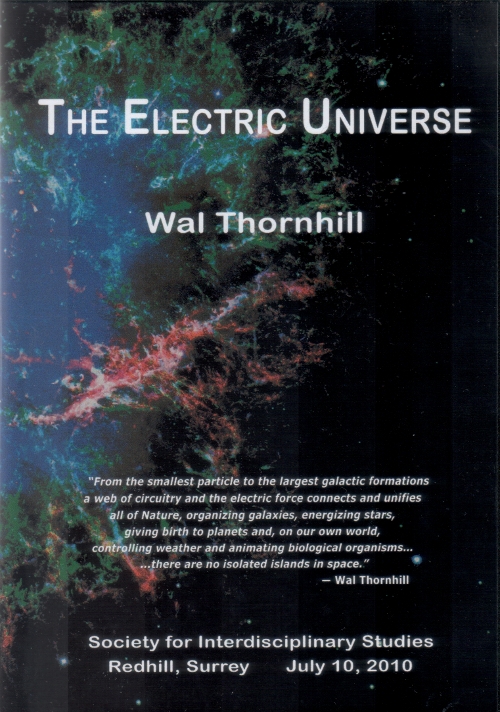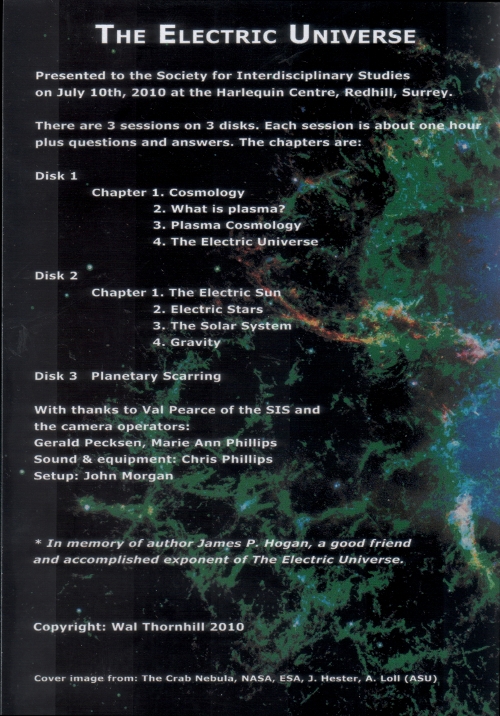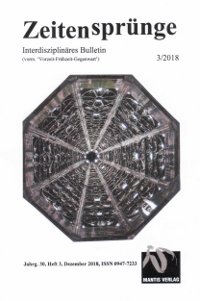Der Vortrag von Wallace Thornhill “Exploring the Electric Universe” vom 10. Juli 2010 in Redhill (Surrey) ist nun endlich auf DVD verfügbar.
Das DVD-Set (3 DVDs) kann über die Webseiten der SIS bestellt werden.
Fantomzeit
Dunkelheit oder Leere im frühen Mittelalter?
Aktuelle Hauptbeiträge:
22. März 2011 Kategorie(n): Fundsachen
eingestellt von: ao
Wallace Thornhill: Exploring the Electric Universe als DVD-Set
20. Juni 2009 Kategorie(n): Mittelalterdebatte, Sonstiges
eingestellt von: jb
Ein Bonmot aus der Etappe
Wie König Artus Karl den Großen übertrumpfte, und der Buchdrucker Caxton sich aus einer Affäre zog, und was dies für die aktuelle Chronologiekritik ausmacht
von Jens Kemper
William Caxton, der erste Buchdrucker im englischen Königreich, hat in seinem Vorwort zu einem von ihm gedruckten und verlegten Werk eine interessante Spur zur Rezeption von Geschichte und Geschichten im ausgehenden Mittelalter hinterlassen. Viele edle Männer des Königreiches, so schreibt er, waren auf ihn zugekommen und hatten ihn bedrängt, doch eine Lebensbeschreibung des berühmtesten, ersten und Haupt der drei vorzüglichsten Könige der Christenheit zu veröffentlichen. Dieses vorzügliche Haupt, dieser König der Könige war: Karl der Große? Mitnichten. Es handelt sich, was bei einer englischen Einschätzung nicht zu sehr verwundert, um König Artus.
15. Dezember 2008 Kategorie(n): Artikel aus den ZS, Fantomzeit, Frühmittelalter, Zeitensprünge
eingestellt von: ao
Dunstan, erster Abt der englischen Nation – Über das Alter der Kirche von Glastonbury
von Renate Laszlo (aus Zeitensprünge 02/2008)
Abstract: Dunstan, Abt von Glastonbury und Erzbischof von Canterbury bis 988, gilt als Gründer mehrerer Klöster, darunter Exeter und Malmesbury (a). In diesen Klöstern erhalten aber schon im 7. Jh. bedeutende Persönlichkeiten der englischen Kirche ihre erste Ausbildung: Winfried (Bonifatius) in Exeter und Aldhelm in Malmesbury. In der ersten Biografie über Dunstan, die bereits 1004, sechzehn Jahre nach seinem Tod, in Frankreich vorliegt, bezeichnet der unter dem Pseudonym „B” schreibende Biograf Dunstan als den ersten Abt der englischen Nation (b). Diese Mitteilung wird in weiteren Berichten über Dunstan wiederholt. Ausnahmslos alle Lebensbeschreibungen über Dunstan teilen mit, dass dieser seine erste Ausbildung von irischen Mönchen erhält (c). Diese Aspekte sind aber zusammen nur möglich, wenn man die Realität der Phantomzeit anerkennt.
1. Januar 2006 Kategorie(n): Fantomzeit
eingestellt von: hek
Welcome Aboard!
What is this blog all about?
It’s The Phantom Time Hypothesis, in other words: the question, whether our chronology of the early middle ages is conclusive or not. But is it really conceivable that this may not be the case? Did not all scientific efforts confirm the traditional course of history – again and again?
The answers are not so obvious:
A closer view at the early middle ages will reveal contradictions everywhere – concerning the historical events and their protagonists as well as the progress of history and civilization. Likewise, an intercomparison between scientific dating methods shows deviations and strange behaviour that, despite of all efforts, can still not be understood within the usual chronology.
The Phantom Time Hypothesis assumes that some three centuries were inserted deliberately into the records of written history – about a thousand years ago. As a consequence, all events (and their protagonists) between the approximate years 614 AD and 911 AD should be fictitious or dated incorrectly. Earlier events will, therefore, move closer to the present time. Affected are all the civilizations having links with the written history of the Roman Empire of Constantinople – or a chronology referring to scientific methods that were ‘calibrated’ themselves using relics from the Roman Empire.
The Interdiszipinäre Bulletin Zeitensprünge edited by Dr. Heribert Illig devotes a large number of its articles to the above questions, aware of the necessity of an interdisciplinary approach to achieve substantial progress. Unfortunately, until now, most scientists are unable to support Illig’s hypothesis, as they feel not competent to clear-up the concerns of the various disciplines.
Fantomzeit.de was conceived to direct attention to the fascinating scientific questions that arise with this hypothesis. This blog shall encourage discussion and communication and simplify the access to more specialized scientific publications. And, of course, visitors should find lots of information and some fun here!
So far, most publications about Illig’s hypothesis are written in German, but there is at least some information available in English:
- Heribert Illig (1991): The Christian era is too long
- Hans-Ulrich Niemitz (1995): Did the early Middle Ages exist?
- Heribert Illig (2005): The Invented Middle Ages
- Alan Bellows (2005): The Phantom Time Hypothesis
- Heribert Illig (2010): There are only 1330 years between the calendar reforms of Caesar and Gregory XIII
- Dmitri Gheorgheni (2013): The Phantom Time Hypothesis
- Steven O. Guth (2013): The “Missing” Dark Ages
- BBC (2011):The Phantom Time Hypothesis
Anwander Archäologie Astronomie Beaufort C14 Dendrochronologie England Fantomzeit Fundsache Fälschungen Heinsohn Illig Islam Keramik Komputistik Niemitz Numismatik Otte Sonstiges Veranstaltung Zeitensprünge
WP Cumulus Flash tag cloud by Roy Tanck and Luke Morton requires Flash Player 9 or better.
- Fantomzeit (138)
- Frühmittelalter (74)
- Fundsachen (181)
- Mittelalterdebatte (50)
- Sonstiges (52)
- Zeitensprünge (171)
- Artikel aus den ZS (70)
- Inhaltsverzeichnisse (101)
- November 2019 (1)
- Oktober 2019 (1)
- Juni 2019 (1)
- Mai 2019 (1)
- Februar 2019 (1)
- Januar 2019 (1)
- Dezember 2018 (1)
- November 2018 (1)
- August 2018 (1)
- April 2018 (1)
- Februar 2018 (1)
- Dezember 2017 (1)
- Oktober 2017 (1)
- August 2017 (2)
- April 2017 (2)
- Dezember 2016 (1)
- August 2016 (1)
- Juli 2016 (1)
- Juni 2016 (1)
- April 2016 (2)
- Dezember 2015 (1)
- September 2015 (1)
- August 2015 (1)
- Juni 2015 (1)
- April 2015 (1)
- März 2015 (1)
- Februar 2015 (1)
- Dezember 2014 (1)
- November 2014 (1)
- Oktober 2014 (1)
- September 2014 (1)
- August 2014 (2)
- Juli 2014 (1)
- Mai 2014 (2)
- April 2014 (2)
- Februar 2014 (1)
- Januar 2014 (3)
- Dezember 2013 (1)
- November 2013 (1)
- Oktober 2013 (1)
- September 2013 (2)
- August 2013 (2)
- Juli 2013 (2)
- Juni 2013 (2)
- Mai 2013 (4)
- April 2013 (3)
- März 2013 (2)
- Februar 2013 (2)
- Januar 2013 (3)
- Dezember 2012 (3)
- November 2012 (3)
- Oktober 2012 (2)
- September 2012 (3)
- August 2012 (2)
- Juli 2012 (3)
- Juni 2012 (2)
- Mai 2012 (2)
- April 2012 (2)
- März 2012 (2)
- Januar 2012 (3)
- Dezember 2011 (4)
- November 2011 (3)
- Oktober 2011 (3)
- September 2011 (3)
- August 2011 (3)
- Juli 2011 (3)
- Juni 2011 (3)
- Mai 2011 (5)
- April 2011 (5)
- März 2011 (3)
- Februar 2011 (3)
- Januar 2011 (5)
- Dezember 2010 (5)
- November 2010 (5)
- Oktober 2010 (6)
- September 2010 (4)
- August 2010 (4)
- Juli 2010 (5)
- Juni 2010 (4)
- Mai 2010 (5)
- April 2010 (5)
- März 2010 (10)
- Februar 2010 (7)
- Januar 2010 (4)
- Dezember 2009 (8)
- November 2009 (5)
- Oktober 2009 (9)
- September 2009 (2)
- August 2009 (6)
- Juli 2009 (4)
- Juni 2009 (2)
- Mai 2009 (6)
- April 2009 (5)
- März 2009 (5)
- Februar 2009 (2)
- Januar 2009 (5)
- Dezember 2008 (8)
- November 2008 (2)
- Oktober 2008 (1)
- September 2008 (5)
- August 2008 (10)
- Juli 2008 (3)
- Juni 2008 (1)
- April 2008 (5)
- März 2008 (5)
- Februar 2008 (5)
- Januar 2008 (5)
- Dezember 2007 (5)
- November 2007 (8)
- Oktober 2007 (3)
- September 2007 (5)
- August 2007 (5)
- Juli 2007 (2)
- Juni 2007 (6)
- Mai 2007 (7)
- April 2007 (1)
- März 2007 (1)
- Februar 2007 (11)
- Januar 2007 (7)
- Dezember 2006 (8)
- November 2006 (2)
- September 2006 (1)
- August 2006 (2)
- April 2006 (1)
- Januar 2006 (3)
- Dezember 2005 (4)
- August 2005 (1)
- April 2005 (1)
- Februar 2005 (1)
- Dezember 2004 (2)
- August 2004 (1)
- Juli 2004 (1)
- April 2004 (1)
- März 2004 (1)
- Dezember 2003 (2)
- August 2003 (1)
- Mai 2003 (1)
- April 2003 (1)
- Dezember 2002 (1)
- November 2002 (1)
- Juni 2002 (1)
- März 2002 (1)
- Dezember 2001 (2)
- September 2001 (1)
- Juni 2001 (1)
- Mai 2001 (1)
- Dezember 2000 (2)
- September 2000 (1)
- Juli 2000 (1)
- Juni 2000 (1)
- März 2000 (1)
- Januar 2000 (2)
- Dezember 1999 (11)
- November 1999 (8)
- Oktober 1999 (12)
- September 1999 (8)
- August 1999 (8)
| M | D | M | D | F | S | S |
|---|---|---|---|---|---|---|
| « Nov | ||||||
| 1 | 2 | 3 | 4 | 5 | 6 | 7 |
| 8 | 9 | 10 | 11 | 12 | 13 | 14 |
| 15 | 16 | 17 | 18 | 19 | 20 | 21 |
| 22 | 23 | 24 | 25 | 26 | 27 | 28 |
| 29 | 30 | 31 | ||||


![]()
![]()
"Certainly, from a geophysical or astrophysical viewpoint, the 14C spectrum is a most interesting geophysical global parameter. It may take many years before it is fully understood" [Sonett & Finney 1990].
![]()




